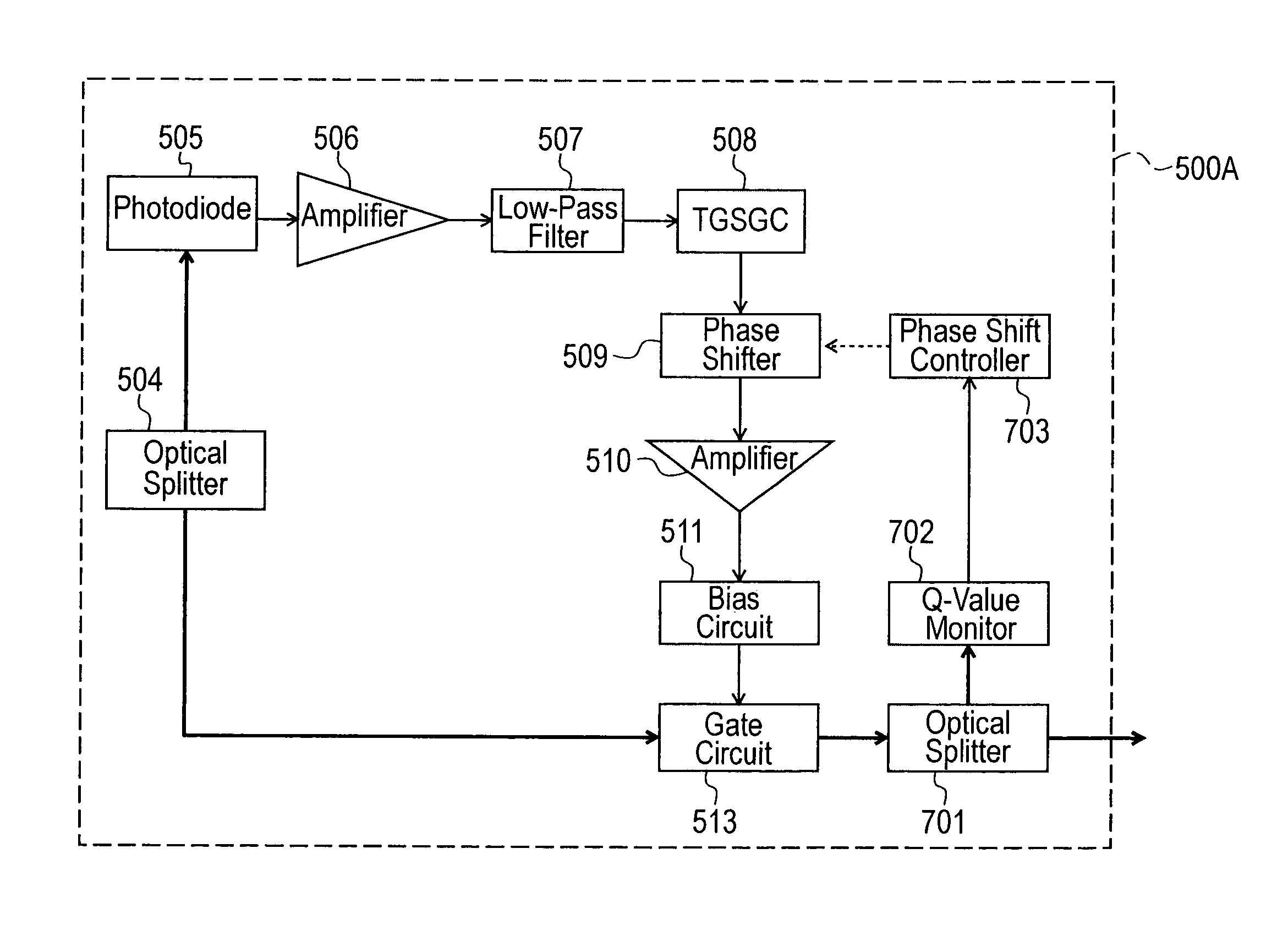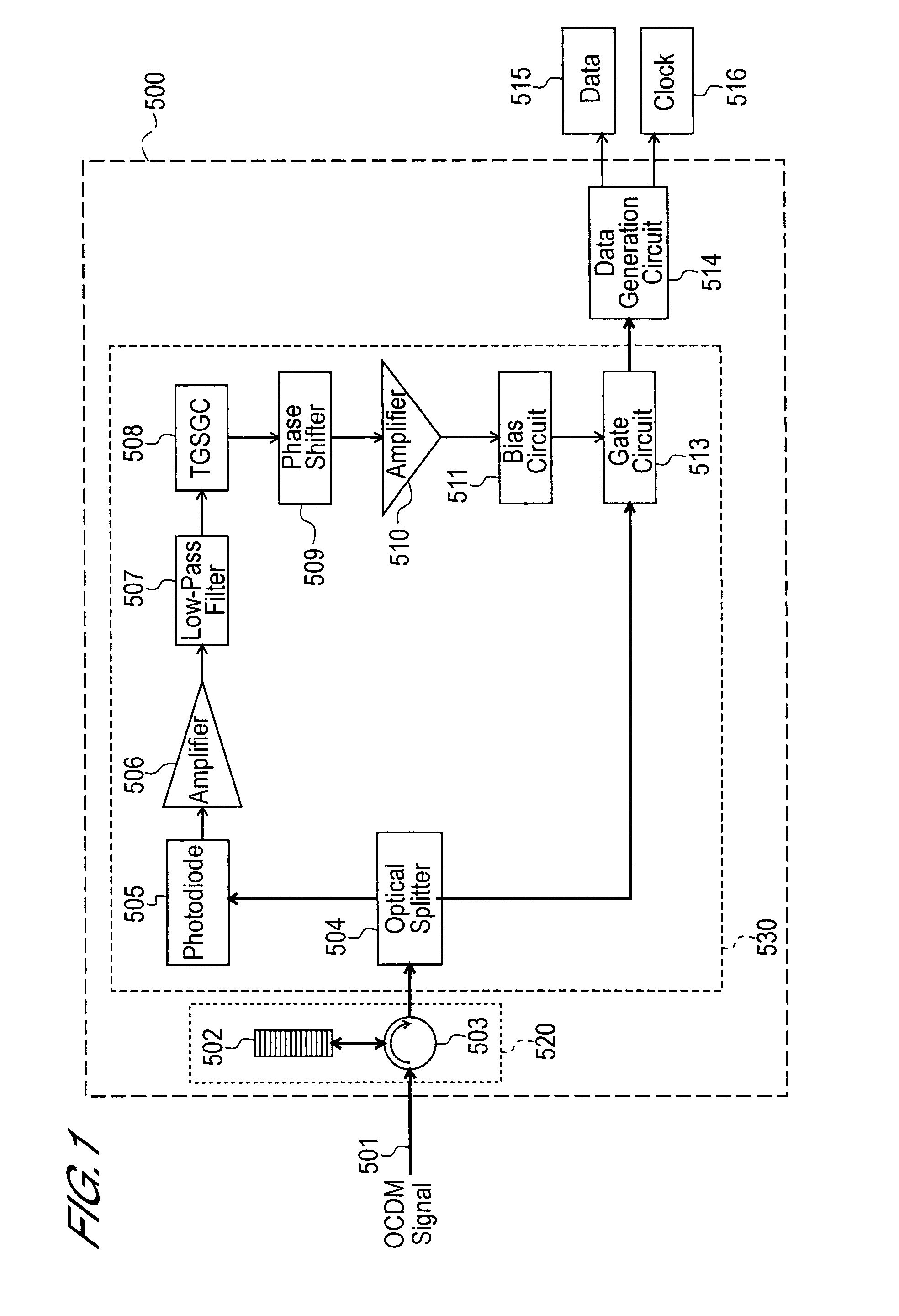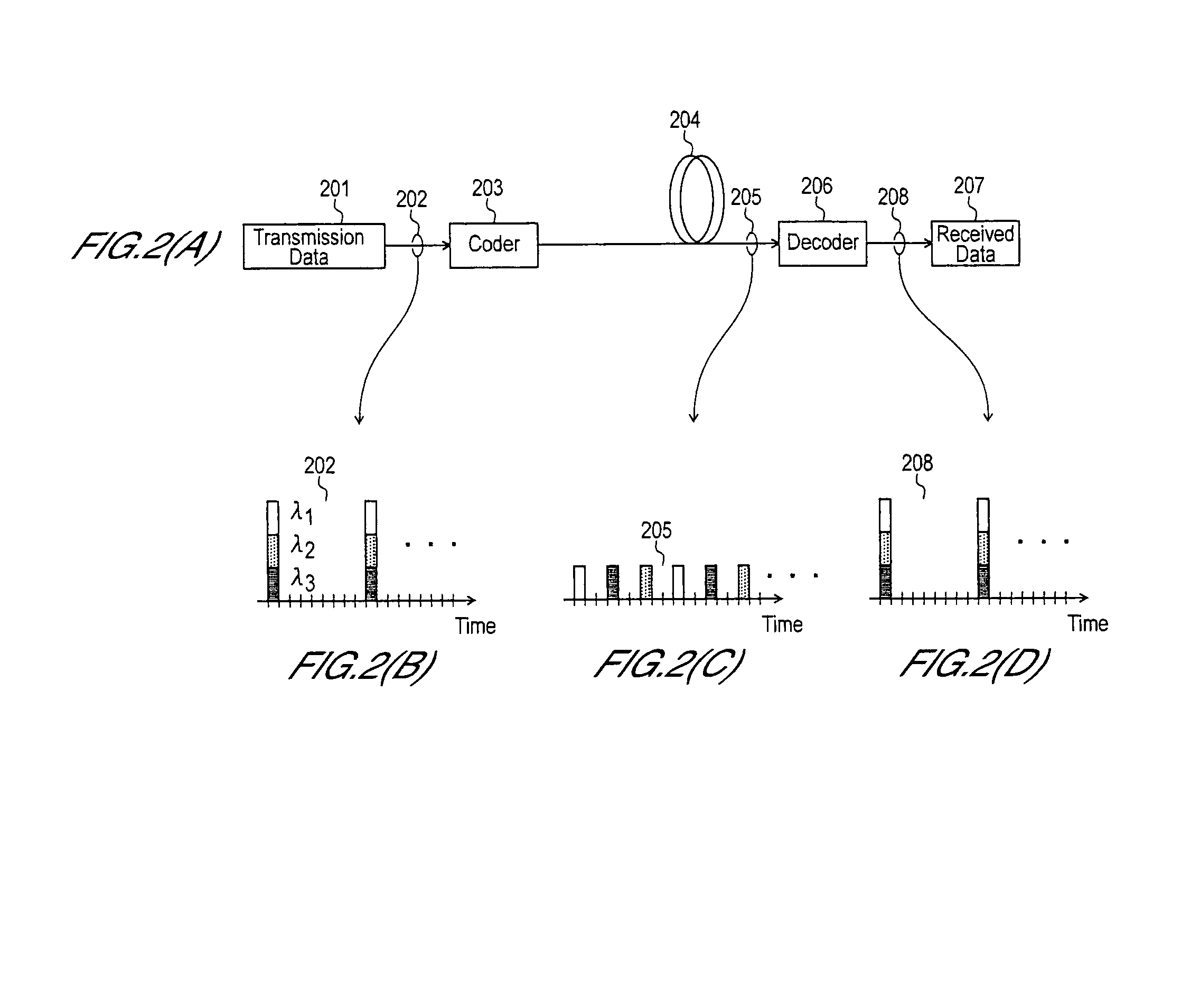Optical receiver
a receiver and optical technology, applied in the field of optical receivers, can solve the problems of constant change, signal pulse string timing differences on transmission, and signal-to-noise ratio (sn ratio) during data identification to degrade,
- Summary
- Abstract
- Description
- Claims
- Application Information
AI Technical Summary
Benefits of technology
Problems solved by technology
Method used
Image
Examples
first embodiment
[0032]The first embodiment of the optical receiver of the present invention is described in detail below with reference to the drawings. In the drawings, optical signal paths are indicated by thick lines, and electrical signal paths are indicated by thin lines. Numbers assigned to these thick and thin lines, in addition to denoting the paths themselves, also denote the optical signals or electrical signals which are propagated in the respective paths.
[0033]FIG. 1 is a block diagram showing the entire configuration of the optical receiver 500 of the first embodiment.
[0034]The optical receiver 500 of the first embodiment comprises a decoding circuit 520, a time gate circuit 530, and a data regeneration circuit 514.
[0035]The decoding circuit 520 comprises a circulator 503 and a fiber Bragg grating (FBG) 502. The decoding circuit 520 is provided as a decoding circuit for an OCDM signal 501 (refer to FIG. 4(D)) transmitted by way of a transmission line (optical fiber, for example).
[0036]...
second embodiment
[0054]Next, the second embodiment of the optical receiver of the present invention is described in detail with reference to the diagrams.
[0055]FIG. 8 is a block diagram showing a detailed configuration of a time gate circuit in the optical receiver 500A of the second embodiment, and a depiction of the decoding circuit and the data regeneration circuit is omitted. In FIG. 8, the same symbols are assigned to portions (constituent elements) that correspond to FIG. 1, which describes the first embodiment.
[0056]In addition to the configuration of the first embodiment, the time gate circuit of the second embodiment comprises an optical splitter 701, a Q-value monitor 702, and a phase shift controller 703, as is apparent from the a comparison of FIGS. 1 and 8.
[0057]The optical splitter 701 splits the optical signal outputted by the gate circuit 513 into two, one split optical signal is fed to the data regeneration circuit, which is not depicted (refer to FIG. 1), and the other split optica...
third embodiment
[0065]Next, the third embodiment of the optical receiver of the present invention is briefly described with reference to the diagrams.
[0066]FIG. 9 is a block diagram showing a detailed configuration of a time gate circuit in the optical receiver 500B of the third embodiment, and a depiction of the decoding circuit and the data regeneration circuit is omitted. In FIG. 9, the same symbols are assigned to portions (constituent elements) that correspond to FIG. 8, which describes the second embodiment.
[0067]In the time gate circuit in the optical receiver 500B of the third embodiment, the phase shifter 509 is omitted and an optical delay device 801 for varying the delay time by means of a control signal from a delay controller 703A is disposed instead in the optical path of the optical splitter 504 and photodiode 505.
[0068]In other words, the optical receiver 500B of the third embodiment is configured so that the timing of the time gate signal fed to the gate circuit 513 can be adjusted...
PUM
 Login to View More
Login to View More Abstract
Description
Claims
Application Information
 Login to View More
Login to View More - R&D
- Intellectual Property
- Life Sciences
- Materials
- Tech Scout
- Unparalleled Data Quality
- Higher Quality Content
- 60% Fewer Hallucinations
Browse by: Latest US Patents, China's latest patents, Technical Efficacy Thesaurus, Application Domain, Technology Topic, Popular Technical Reports.
© 2025 PatSnap. All rights reserved.Legal|Privacy policy|Modern Slavery Act Transparency Statement|Sitemap|About US| Contact US: help@patsnap.com



